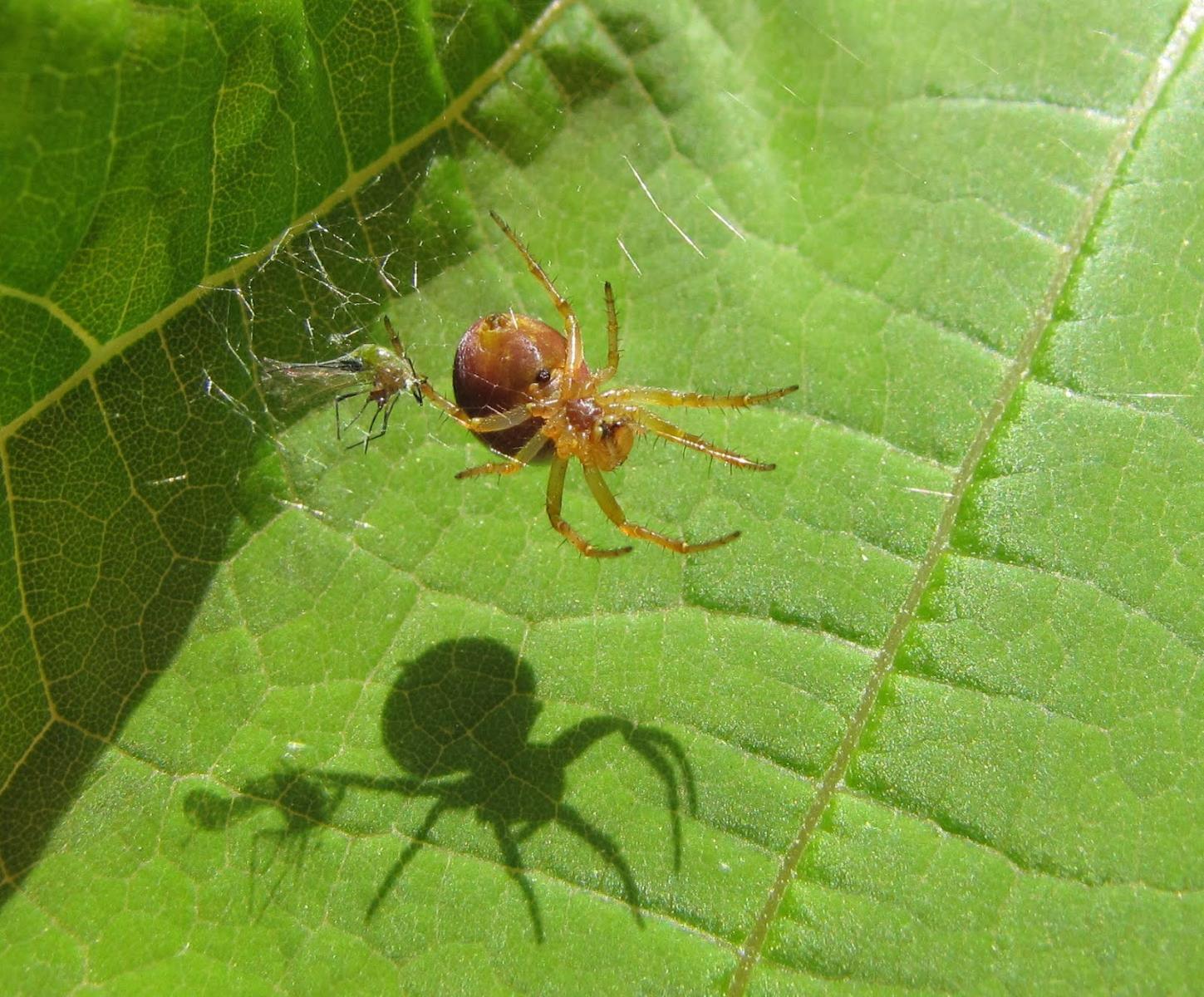
The Six-spotted Orbweaver is a fascinating creature that has captured the attention and curiosity of nature enthusiasts and researchers alike. With its distinct markings and incredible web-spinning abilities, this spider stands out from the rest. In this article, we will explore 12 extraordinary facts about the Six-spotted Orbweaver that will showcase just how remarkable this arachnid truly is. From its intricate web designs to its unique behavior, the Six-spotted Orbweaver continues to amaze and surprise us. Join us on this informative journey as we delve into the world of this captivating spider and uncover the secrets that make it a true wonder of nature.
Key Takeaways:
- Six-spotted Orbweavers are expert weavers known for their intricate orb-shaped webs, helping control insect populations and maintaining natural balance in ecosystems across North America.
- These resilient spiders, with their unique markings and ability to adapt to urban environments, play a vital role in nature while posing no significant threat to humans.
The Six-spotted Orbweaver is a Master Weaver
The Six-spotted Orbweaver, scientifically known as Araneus venator, is a species of spider renowned for its exceptional weaving skills. This small but mighty spider is known for its intricate and symmetric orb-shaped webs, which it uses to catch prey. These webs are constructed using strong silk threads that are woven with precision and care.
It Gets Its Name from Its Unique Markings
As the name suggests, the Six-spotted Orbweaver is recognized by the six distinct white spots on its abdomen. These spots are arranged in a distinctive pattern, making it easy to identify this species. The combination of the vibrant yellow color and these spots adds to the spider’s visual appeal.
They Are Found Across North America
The Six-spotted Orbweaver can be found throughout North America, from Canada to Mexico. They thrive in a variety of habitats, including forests, meadows, gardens, and even urban areas. This widespread distribution contributes to their importance in maintaining the natural balance of ecosystems.
They Display Sexual Dimorphism
Male and female Six-spotted Orbweavers exhibit sexual dimorphism, meaning there are visible physical differences between the two sexes. Females are usually larger than males, and their coloration may slightly differ. Understanding these distinct characteristics is essential for accurate identification of the species.
They Spin Their Webs at Night
The Six-spotted Orbweaver is a nocturnal creature, meaning it primarily hunts and spins its webs during the night. This behavior allows the spider to take advantage of the abundance of insects that are more active after dark. By strategically placing their webs in areas with high insect traffic, these spiders increase their chances of catching prey.
They Possess Venom to Subdue Their Prey
Like other spiders, the Six-spotted Orbweaver possesses venom glands. This venom is used to immobilize and subdue their prey, usually consisting of small insects like flies and mosquitoes. While the venom is potent enough to paralyze their prey, it is typically harmless to humans and poses no significant threat.
They Are Expert Hiders
The Six-spotted Orbweaver shows remarkable camouflage abilities. Their vibrant yellow coloration blends seamlessly with the surroundings, allowing them to remain hidden from predators and unsuspecting prey. This camouflage is crucial for their survival in the wild.
They Can Rebuild Their Webs
In the face of damage or destruction, the Six-spotted Orbweaver has the remarkable ability to rebuild its web quickly. Whether it is due to wind, rain, or an unfortunate encounter with a larger animal, these spiders can rapidly reconstruct their intricate webs and resume their hunting activities.
They Are Not Aggressive Towards Humans
While the Six-spotted Orbweaver may look intimidating, especially with its intricate web and unique markings, it is generally not aggressive towards humans. These spiders prefer to retreat or remain motionless when humans approach, rather than engaging in defensive behavior or biting.
They Play an Essential Role in Ecosystems
The presence of Six-spotted Orbweavers in ecosystems is crucial for maintaining the balance of populations. By controlling the insect populations through predation, these spiders help prevent outbreaks and maintain the natural equilibrium within their habitats.
They Can Live for Several Months
The average lifespan of a Six-spotted Orbweaver can range from a few months to over a year, depending on various factors such as environmental conditions and availability of food. During this time, they contribute to their ecosystem and continue to fascinate scientists and nature enthusiasts alike.
They Have Adapted to Human-Made Structures
One interesting fact about Six-spotted Orbweavers is their ability to adapt to human-made structures. They can often be found spinning their intricate webs on branches, fences, buildings, or even playground equipment. This adaptability is a testament to their resilience in urban environments.
Discover the Fascinating World of the Six-spotted Orbweaver
The Six-spotted Orbweaver, with its remarkable weaving skills, distinctive markings, and important ecological role, is truly one of nature’s wonders. Whether you encounter them on a moonlit night or stumble upon their intricate webs during a daytime walk, take a moment to appreciate the skill and beauty of these extraordinary spiders. They remind us of the intricate interconnections and diversity of life that exist all around us.
Conclusion
The Six-spotted Orbweaver is truly an extraordinary creature. With its unique web-building abilities, vibrant coloration, and fascinating hunting techniques, it stands out among its arachnid counterparts. Its ability to adapt to various environments and its important role in controlling insect populations make it a valuable species in the ecosystem.We hope these 12 extraordinary facts about the Six-spotted Orbweaver have given you a newfound appreciation for this incredible creature. Whether you come across one in your garden or stumble upon its intricate web in the wilderness, take a moment to admire the beauty and ingenuity of this small spider.
FAQs
Q: Where can I find Six-spotted Orbweavers?
A: Six-spotted Orbweavers can be found all across North and Central America, inhabiting gardens, forests, and grasslands.Q: Are Six-spotted Orbweavers venomous?
A: Yes, Six-spotted Orbweavers possess venom, but it is not harmful to humans. Their bites are rarely felt and typically only cause mild irritation.Q: What do Six-spotted Orbweavers eat?
A: These spiders primarily feed on flying insects, such as flies, mosquitoes, and moths, which they capture in their intricate orb-shaped webs.Q: Do Six-spotted Orbweavers build their webs every day?
A: No, Six-spotted Orbweavers do not rebuild their entire webs every day. Instead, they repair and maintain their webs by adding new silk threads and fixing damaged areas.Q: How long do Six-spotted Orbweavers live?
A: The lifespan of Six-spotted Orbweavers varies depending on the species and environmental conditions, but on average, they live for about one year.Q: Are Six-spotted Orbweavers beneficial to the ecosystem?
A: Yes, Six-spotted Orbweavers play a crucial role in controlling insect populations, as they are excellent pest controllers.Q: Can Six-spotted Orbweavers harm plants or crops?
A: No, Six-spotted Orbweavers do not pose a threat to plants or crops. They focus on catching flying insects and do not damage vegetation.Q: Are Six-spotted Orbweavers active during the day or night?
A: Six-spotted Orbweavers are primarily active during the night when their prey is most abundant. However, they may also be spotted during the day, especially if disturbed.Q: Do Six-spotted Orbweavers exhibit any parental care?
A: Yes, some species of Six-spotted Orbweavers exhibit parental care, with females guarding their egg sacs until the spiderlings hatch.Q: Can Six-spotted Orbweavers jump or fly?
A: No, Six-spotted Orbweavers cannot jump or fly. They rely on their webs and their ability to maneuver within them to catch prey.Q: Are Six-spotted Orbweavers solitary or social spiders?
A: Six-spotted Orbweavers are primarily solitary spiders, although during mating season, multiple males may compete for access to a female’s web.Q: How do Six-spotted Orbweavers reproduce?
A: After mating, the female Six-spotted Orbweaver lays her eggs inside a silken sac and guards the sac until the spiderlings hatch.
Was this page helpful?
Our commitment to delivering trustworthy and engaging content is at the heart of what we do. Each fact on our site is contributed by real users like you, bringing a wealth of diverse insights and information. To ensure the highest standards of accuracy and reliability, our dedicated editors meticulously review each submission. This process guarantees that the facts we share are not only fascinating but also credible. Trust in our commitment to quality and authenticity as you explore and learn with us.


